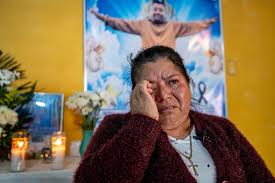
Cases of invasive Streptococcus pyogenes double across the U.S., with Los Angeles and vulnerable groups most at risk.
A sharp increase in severe, and sometimes life-threatening, infections caused by the bacterium Streptococcus pyogenes—commonly known as group A strep—is raising concern among public health officials across the United States, including in California, where cases have surged in recent years.
The Centers for Disease Control and Prevention (CDC) reports that the number of invasive group A strep infections more than doubled from 2013 to 2022, rising from 4 to nearly 8 cases per 100,000 people. This jump translates into over 21,000 reported cases and nearly 2,000 deaths in that time. Experts believe the national death toll may exceed 10,000 when extrapolated across all states.
In California, the Department of Public Health has observed a troubling rise in invasive strep A infections, particularly among older adults, individuals with autoimmune disorders, and residents of long-term care facilities. Los Angeles County issued a health advisory in late 2024 following multiple outbreaks of flesh-eating disease (necrotizing fasciitis) and streptococcal toxic shock syndrome.
“Within 24 to 48 hours, a seemingly mild illness can spiral into a medical emergency,” warned Dr. Victor Nizet, a pediatric infectious disease specialist at the University of California, San Diego. “Patients can go from flu-like symptoms to organ failure in less than two days.”
Streptococcus pyogenes is the same bacterium that causes strep throat and minor skin infections. However, when it becomes invasive—entering the bloodstream, lungs, or other sterile areas—it can cause life-threatening illnesses such as:
- Sepsis
- Pneumonia
- Meningitis
- Necrotizing fasciitis (flesh-eating disease)
- Streptococcal toxic shock syndrome
Doctors are seeing more unusual and severe cases in recent years, including in children. Although the CDC study did not detect an overall increase in pediatric cases from 2013 to 2022, hospitals across the country—including in Los Angeles—have reported spikes in severe childhood infections since late 2022, often coinciding with flu, COVID-19, or RSV infections.
According to multiple studies, the highest risk groups include:
- Adults over 65
- People with diabetes, obesity, or autoimmune conditions
- Individuals experiencing homelessness
- People who inject drugs
- Residents of nursing homes or long-term care centers
In 2022, the infection rate among unhoused populations reached a staggering 807 per 100,000—one of the highest rates ever recorded globally.
Alarmingly, newer strains of group A strep are not only more likely to cause skin infections but also appear more resistant to antibiotics like macrolides and clindamycin. These are critical alternatives for patients allergic to penicillin or suffering from toxic shock syndrome.
Despite the growing threat, there is currently no vaccine approved for group A strep. Moderna is reportedly working on a candidate vaccine using similar mRNA technology to its COVID-19 formula, but experts express concern about regulatory delays.
“The lack of a strep vaccine is devastating,” Dr. Nizet said. “Especially when we’re seeing more virulent strains and rising antibiotic resistance.”
The CDC and WHO have both placed Streptococcus pyogenes on their lists of priority pathogens that urgently require new prevention and control measures. In the meantime, health officials in California are urging increased public awareness, early testing, and infection control—particularly in high-risk settings.
If you or someone you know develops sudden high fever, intense pain, or flu-like symptoms that worsen quickly, seek immediate medical attention. Early detection can save lives.








